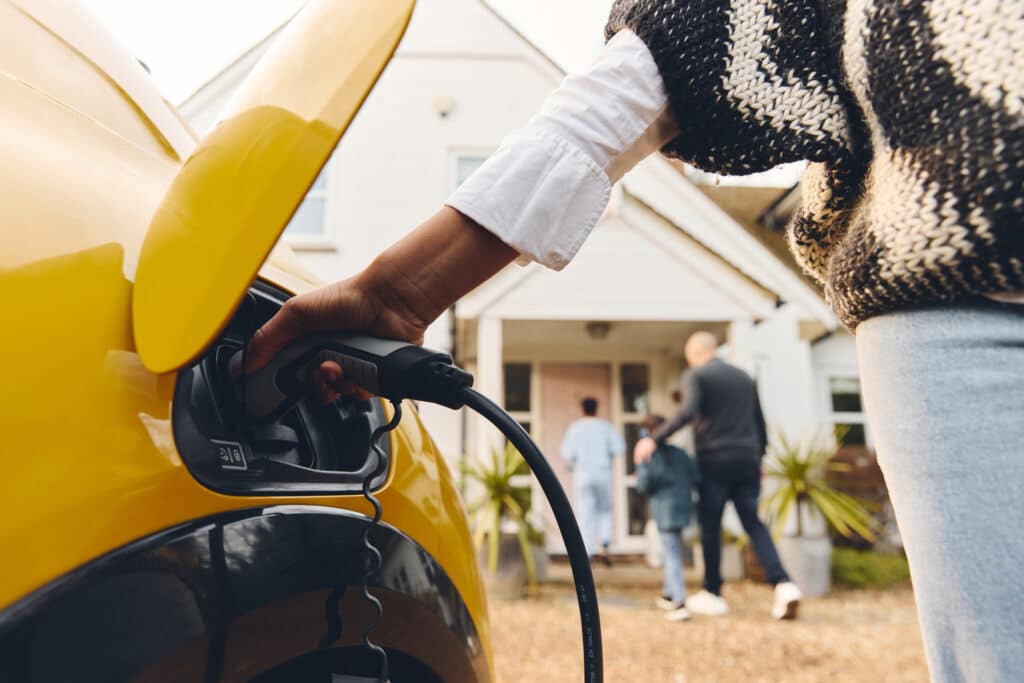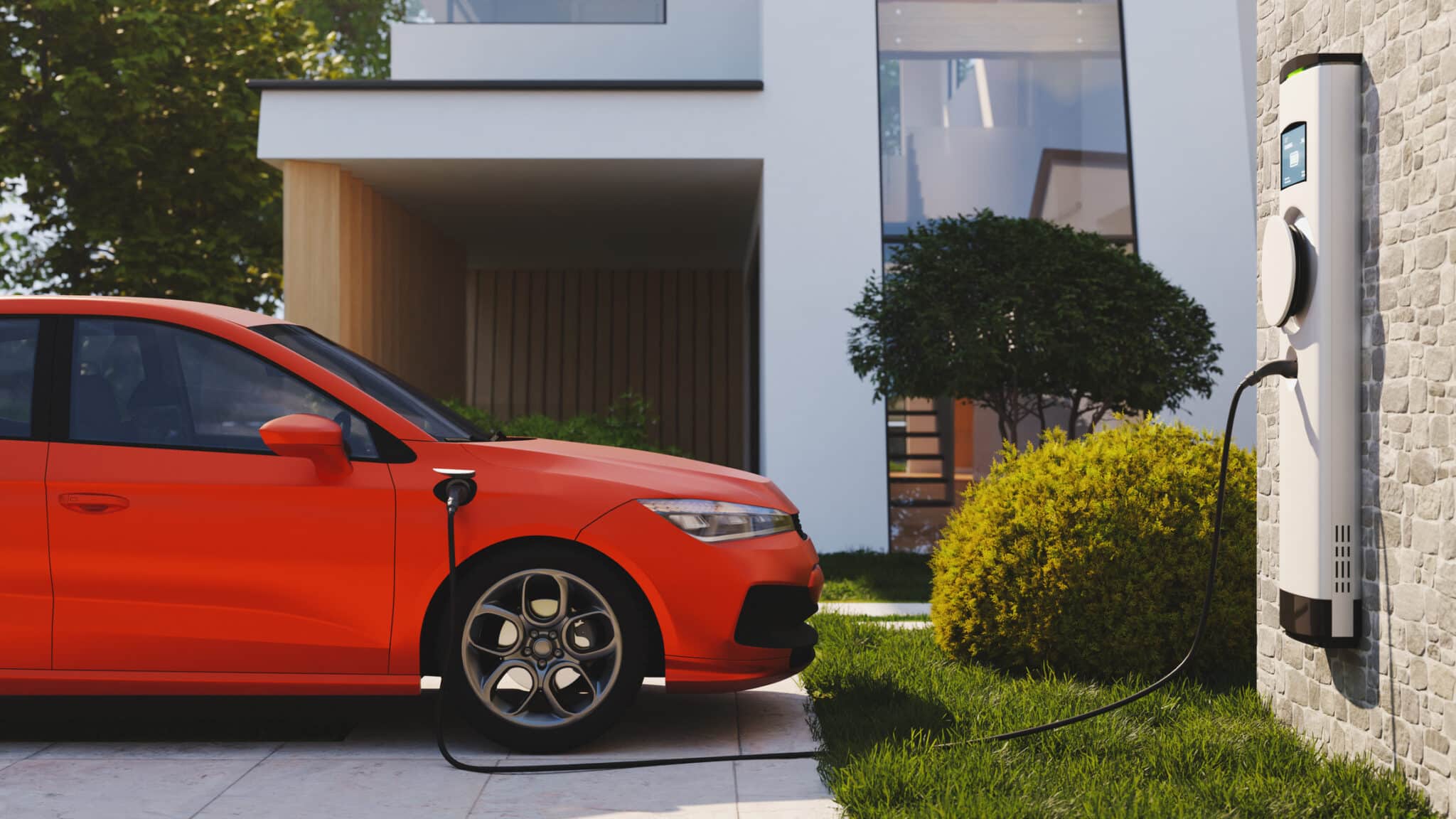Electric vehicles (EVs) impact residential power grids by increasing electricity demand, especially during peak hours when many charge at once. This can strain the grid, leading to potential overloads and outages. Solutions include smart grid technologies, demand response programs, and time-of-use pricing to encourage off-peak charging, reducing grid stress. Using renewable energy like solar power with home battery storage can also help manage the load, making EV adoption more sustainable and easing the impact on local grids.

Are you curious about how electric vehicles (EVs) are changing not just our roads but also our homes? With the rapid rise of EVs, especially in places like Charleston, there’s a growing conversation around how these cars affect the power grids that supply our homes with electricity.
Have you ever wondered what happens when an entire neighborhood starts charging their EVs at the same time? Let’s explore the fascinating impact of EVs on residential power grids and what it means for your everyday life.
The Impact of Electric Vehicles on Residential Power Grids
As electric vehicles (EVs) rapidly become a significant part of daily life in Charleston and beyond, their impact on residential power grids is increasingly important to understand.
As more people plug in their Electric Vehicles at home, the pressure on our local power grids grows, potentially affecting the electricity supply to our homes and neighborhoods.
In this article, we explore how electric vehicles interact with residential power grids, helping you stay informed and prepared for the changes that lie ahead.
What Are Electric Vehicles?
Electric vehicles (EVs) are cars powered by electricity rather than gasoline. Unlike traditional cars with internal combustion engines, EVs use electric motors and are powered by batteries that you can recharge at home or at charging stations. These vehicles are becoming increasingly popular due to their environmental benefits and lower operating costs.
EVs come in various models, from fully electric vehicles that rely solely on electricity to plug-in hybrids that combine electric power with a traditional engine.
Whether you’re driving a sleek Tesla or a budget-friendly Nissan Leaf, the way these cars work is fundamentally different from the gas-powered cars we’ve known for decades.
As more people make the switch to electric vehicles, understanding how they operate and how they impact our daily lives, especially our power usage, becomes crucial. With no tailpipe emissions and the ability to charge at home, EVs are revolutionizing how we think about transportation and energy.
Why EV Adoption is Growing Rapidly
First and foremost, EVs are seen as a crucial step toward reducing our carbon footprint. With zero tailpipe emissions, they offer a cleaner alternative to traditional gasoline-powered cars, helping to combat air pollution and climate change.
Another significant factor driving the adoption of EVs is the long-term cost savings. While the initial purchase price of an EV might be higher, the savings on fuel and maintenance can quickly add up.
Electricity is generally cheaper than gasoline, and EVs have fewer moving parts, which means less wear and tear and lower maintenance costs over time.
Technology has also played a big role in making EVs more attractive. Improvements in battery technology have led to longer driving ranges, faster charging times, and more affordable vehicles. Additionally, government incentives, like tax credits and rebates, are making it easier for consumers to make the switch.
How Electric Vehicles Consume Power
EV Charging Basics
Charging an EV is similar to charging your smartphone, just on a larger scale. There are three main types of charging methods: Level 1, Level 2, and DC Fast Charging.
Level 1 uses a standard household outlet and provides the slowest charge, often taking up to 20 hours to fully charge a battery. Level 2 charging is faster and typically requires a special charging station, reducing the charging time to around 4-8 hours.
DC Fast Charging is the quickest option, capable of charging an EV in under an hour, but it requires specialized equipment and is usually found at public charging stations.
Power Requirements for Different EV Models
Not all EVs are created equal when it comes to power consumption. Smaller, more efficient models like the Nissan Leaf use less power compared to larger, more performance-oriented vehicles like the Tesla Model S.
The range, or how far an EV can travel on a full charge, also varies, with some models offering over 300 miles per charge. This range impacts how often you need to charge and, consequently, how much electricity your EV will use.
Charging Methods: Level 1, Level 2, and DC Fast Charging
The type of charging method you choose has a direct impact on how quickly your EV consumes power. Level 1 is ideal for those who don’t drive much and have plenty of time to charge overnight.
Level 2 is more suitable for daily commuters who need a faster charge, and DC Fast Charging is perfect for road trips or quick top-ups.
Each method draws different amounts of electricity, influencing your overall energy usage and, in turn, the load on the residential power grid.
Residential Power Grids: An Overview
Understanding Residential Power Grids
A residential power grid is like the circulatory system of electricity, carrying power from the source to where it’s needed. When you plug in an appliance or turn on a light, the electricity travels from the grid, through your home’s wiring, and into the device.
This process is usually seamless, thanks to the grid’s ability to manage electricity demand across thousands of homes.
The Role of the Grid in Power Distribution
The power grid plays a critical role in distributing electricity efficiently and reliably. It balances supply and demand by adjusting the flow of electricity based on how much power is being used at any given time.
This balancing act is crucial to avoid power outages and ensure that every home has enough electricity, especially during peak usage times.
How Grids Handle Daily Power Demands
Throughout the day, the demand for electricity fluctuates. During the morning and evening, when people are at home using appliances, lights, and heating or cooling systems, the demand is higher.
The grid must handle these peaks and troughs in demand to keep everything running smoothly. It does this by drawing on different power sources and adjusting the flow of electricity as needed.
Impact of EVs on Residential Power Grids
Increased Power Demand from EV Charging
When multiple EVs are charged simultaneously in a residential area, the power demand spikes. This increase is particularly noticeable during peak hours when people return home from work and plug in their cars along with using other household appliances.
The added demand from EV charging can push the grid closer to its limits, especially in older neighborhoods with infrastructure that wasn’t designed to handle such loads.
Peak Load Challenges: What Happens During High Usage Times
Peak load times are the periods when electricity usage is at its highest. EVs add to this challenge because they typically require a substantial amount of power, especially when charged quickly.
During these high usage times, the grid may struggle to keep up with the demand, leading to reduced efficiency and, in some cases, power outages or the need for rolling blackouts to prevent overloads.
Potential Overloads and Their Consequences
If the power grid is pushed too hard by the increased demand from EV charging, it can lead to overloads. An overloaded grid can cause transformers to fail, leading to power outages that could last from a few minutes to several hours.
These outages not only disrupt daily life but can also result in costly repairs and upgrades to the infrastructure. For neighborhoods with many EV owners, understanding and managing this risk is crucial to maintaining reliable power.
Managing Increased Demand on the Grid
Smart Grid Technologies
One of the most promising solutions is the development of smart grid technologies. A smart grid uses advanced digital communication and automation to monitor and manage the flow of electricity more efficiently.
It can detect changes in demand, respond to power outages faster, and even predict where issues might occur. By making the grid “smarter,” utilities can better manage the additional load from EVs, distributing power more evenly and preventing overloads.
Demand Response Programs
Demand response programs are another effective tool for managing the increased demand on the grid. These programs encourage consumers to reduce or shift their electricity use during peak times, often in exchange for financial incentives.
For EV owners, this might mean charging their vehicles during off-peak hours when demand is lower. By spreading out the electricity usage, these programs help alleviate the stress on the grid and keep everything running smoothly.
Time-of-Use Pricing: Encouraging Off-Peak Charging
Time-of-use (TOU) pricing is a strategy that charges different rates for electricity depending on the time of day. During peak hours, electricity is more expensive, while off-peak hours offer lower rates.
This pricing model encourages EV owners to charge their vehicles during times when the grid is under less strain, such as late at night or early in the morning.
By aligning charging times with lower demand periods, TOU pricing helps prevent overloads and can also save homeowners money on their electricity bills.

The Role of Renewable Energy in Supporting EV Adoption
Solar Power and EV Charging
One of the most effective ways to power an EV sustainably is through solar energy. Homeowners with solar panels can generate their own electricity, which can then be used to charge their EVs.
This not only reduces reliance on the grid but also lowers electricity costs and carbon footprints. In sunny areas like Charleston, solar power can be a particularly viable option, providing a clean and consistent energy source for daily EV charging.
Integration of Home Battery Storage
Home battery storage systems, like Tesla’s Powerwall, are becoming increasingly popular as a way to store excess solar energy generated during the day.
This stored energy can be used to charge Electric Vehicles at night when the sun isn’t shining, or during peak hours when electricity rates are higher.
By integrating battery storage with solar power, homeowners can maximize their use of renewable energy and further reduce their dependence on the grid.
How Renewable Energy Can Alleviate Grid Stress
Renewable energy sources can significantly alleviate the stress on residential power grids. By generating and using power locally, through solar panels and home batteries, homeowners can reduce the overall demand on the grid.
This decentralized approach not only supports the grid but also ensures that as EV adoption grows, the transition can be sustainable and resilient.
In the long run, widespread use of renewable energy for EV charging could lead to a more stable and efficient power grid.
The Importance of Professional Assessment
Why You Shouldn’t DIY: The Risks of Overloading Circuits
One of the main risks of installing an EV charger yourself is the potential to overload your home’s electrical circuits.
EV chargers draw a significant amount of power, and if your home’s wiring isn’t up to the task, you could face serious problems like tripped breakers, overheating, or even electrical fires.
A professional electrician will ensure that your home’s electrical system can handle the extra load, preventing these dangerous situations.
The Role of Electricians in EV Charger Installation
Electricians play a key role in safely installing EV chargers. They can assess your home’s electrical capacity, recommend the right type of charger, and ensure that the installation meets all local codes and safety standards.
Professional electricians also have the expertise to handle any necessary upgrades, such as installing a dedicated circuit or upgrading your electrical panel, to ensure that your EV charger operates efficiently and safely.
Ensuring Grid Compatibility: Professional Insights
Another important aspect of professional assessment is ensuring that your EV charger is compatible with the local power grid.
Electricians can provide insights into how your EV charging setup will interact with the grid, helping to avoid potential issues like power surges or interference with other electrical systems in your home.
By relying on a professional, you can be confident that your EV charging station is not only safe and efficient but also optimized for your home and community.
The Future of Residential Power Grids with EVs
Innovations in Grid Management
The future of residential power grids will likely see a range of innovations aimed at better managing electricity demand. Smart grid technology, for example, will become increasingly important.
These grids can automatically adjust power distribution based on real-time data, helping to smooth out peaks in demand and prevent overloads.
Additionally, advanced metering infrastructure (AMI) will allow utilities and homeowners to monitor electricity use more closely, making it easier to identify and address potential issues before they cause problems.
Potential Grid Upgrades to Handle EV Growth
As more people adopt EVs, utilities may need to make significant upgrades to the existing power grid.
This could involve enhancing the capacity of transformers and substations, upgrading distribution lines, and even rethinking the layout of power delivery systems in neighborhoods with high concentrations of EV owners.
These upgrades will ensure that the grid can handle the increased load and continue to provide reliable power to all homes.
Ready to Power Up Your Home for Electric Vehicles?
Are you in Charleston and considering electric vehicles? Ensure your home is prepared with the right electrical setup! At Mister Sparky of Charleston, SC, we specialize in professional EV charger installations and electrical upgrades, ensuring your home is safe and ready to support your new ride. Contact us today to get started on making your home EV-ready with expert care and precision!
FAQs on Electric Vehicles
How much power does the electric vehicle consume?
The power consumption of the electric vehicles (EV) depends on the model and usage. On average, Electric Vehicles consumes about 30 kWh per 100 miles. However, larger electric vehicles or those driven aggressively may use more power.
Can I charge my electric vehicles with solar panels?
Yes, you can charge your electric vehicles using solar panels. Many homeowners install solar panels to generate electricity and pair them with a home battery storage system to charge their electric vehicles sustainably, even when the sun isn’t shining.
Do I need to upgrade my home’s electrical panel to install an EV charger?
Not always, but if your home’s electrical panel is old or doesn’t have enough capacity, you may need to upgrade it to safely support the electric vehicles charger, especially for Level 2 chargers that require more power.
What is the best time to charge my electric vehicles to avoid straining the grid?
The best time to charge your electric vehicles is during off-peak hours, typically late at night or early in the morning, when the demand for electricity is lower. This not only helps reduce strain on the grid but can also save you money if your utility offers time-of-use pricing.
How will the increasing number of electric vehicles impact the reliability of residential power grids?
As more electric vehicles are adopted, residential power grids will need to adapt to handle the increased demand. With smart grid technologies, grid upgrades, and renewable energy integration, the impact can be managed to maintain reliability.









